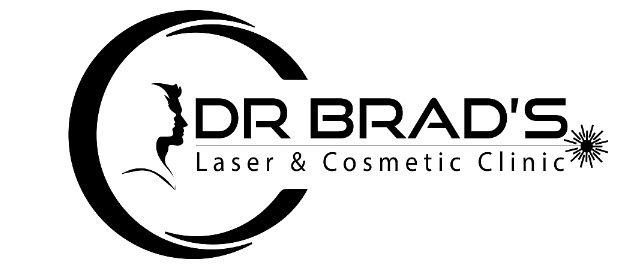Laser Hair Removal in Bristol
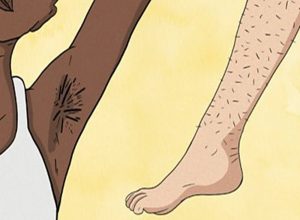
Get genuine laser hair removal in Bristol. For thousands of years, people of all races have been trying to remove their unwanted facial or body hair, often using dangerous or simply ineffective treatments. Dr Brad is proud to offer genuine laser hair removal that is scientifically proven to be both safe and effective to the people of Bristol and surrounding areas.
Listen to what Dr Brad has to say about his laser hair removal treatments.
Why Choose Dr Brad for Laser Hair Removal in Bristol?
Dr Brad is a GP and an aesthetic medicine expert dedicated to very high standards and he performs all laser hair removal consultations and treatments himself.
Dr Brad is one of the few people in the UK to have been trained, assessed and formally accredited by The Medical Aesthetic Training Academy in London’s world famous Harley Street with a Level 5 Laser Hair Removal qualification. Level 5 is the highest standard achievable for laser hair removal in the UK. Dr Brad is registered with the GMC and holds full medical indemnity insurance.
The Best Technology.
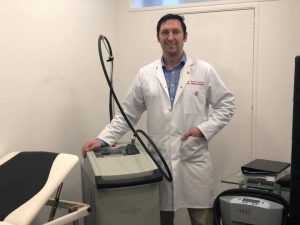
Dr Brad is able to treat all skin types due to his large capital investment in “gold standard” laser technology in the form of the powerful and clinically proven Cynosure Elite Plus machine. This is arguably the fastest laser hair removal machine in the world today, manufactured by the world’s largest aesthetic medical laser company. This machine has two different types of laser: an Alexandrite crystal 755nm laser for Caucasian skin types and an Nd:YAG crystal 1064nm laser especially for the safe, effective treatment of dark and black skin types. This is a far superior machine to the “halfway house” diode lasers on the market for hair removal due to its two specific wavelengths and wide range of customisable power and pulse duration settings. It’s also superior in every way to cheap Intense Pulse Light (IPL) hair removal machines (although therapists will often try to deceive you by selling their IPL as “laser”). IPL may also be generally considered less safe for darker skin types because it doesn’t penetrate the skin deeply enough compared to a 1064nm laser so is likely to cause permanent damage epidermal melanin pigmentation. What does all this mean for you? With Dr Brad you can get a more tailored, speedy, safe and effective laser treatment for your specific skin type and a good chance of requiring less treatment sessions to achieve your desired results.
Dr Brad can also remove “peach fuzz” type hair (fine, downy hair) with his DEKA Synchro QS4 laser.
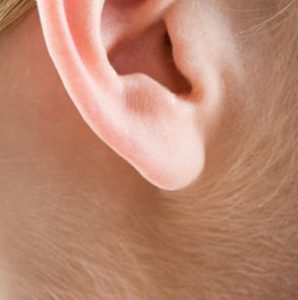
Typical “peach fuzz” hair.
We have also invested in a state of the art “Zimmer Cryo 6” skin cooling device which will make your treatment more comfortable and safe.
The Reality of Permanent Laser Hair Removal.
People have been conditioned through the use of incorrect language in the media to expect “permanent laser hair removal”, as though there is no chance that any hair could ever regrow in the skin. Technically speaking, that is misleading and incorrect because there is always a small possibility that some hair could re-grow at some point. In reality, we can offer a significant permanent hair reduction at treated areas, which is often a very high percentage reduction in the total numbers of hairs re-growing after a course of treatment. It’s a technical point but it’s one that’s worth making.
How Does Laser Hair Removal Work?
Laser energy works by the principle of “selective photothermolysis” ie the light energy heats up and deactivates some parts of your skin more than others. Melanin is the molecule that gives hair colour.
We know that 755nm is the best wavelength of laser for targeting the melanin pigment in the hair follicle. The hair follicle’s melanin absorbs the 755nm laser energy better than the surrounding tissues so it heats up and causes damage to the hair follicle, stopping it from producing hair again. However, the 755nm laser is also absorbed by melanin in the upper layers of the skin (the epidermis) so Caucasians with a tan (representing more melanin than usual in the epidermis) must wait until their tan has faded to receive 755nm laser therapy to avoid the risk of permanent skin pigmentation loss.
The 1064nm wavelength is less well absorbed by the melanin in the upper layers of the skin (epidermis) that gives our skin its colour and instead penetrates more deeply to the melanin in the hair follicle where it gets absorbed. Therefore, we can use it to safely and effectively treat people with skin of colour or even fair skinned people with a tan.
Can I Have Laser Hair Removal Treatment If I’m Tanned?
Exposure to sunlight means exposure to UV rays and these cause an increase in melanin in the epidermis as your skin attempts to protect itself from those harmful UV rays (ie the development of a suntan). As explained earlier, a higher than normal concentration of melanin in your skin increases the risks of laser energy being absorbed in the epidermis rather than the hair follicle, potentially causing a temporary or permanent change in the pigmentation of your skin.
People with a fake tan can’t safely undergo treatment for the same reasons and any fake tan must be completely absent from the treatment area before laser treatment can begin.
Caucasian or pale skinned individuals should avoid/minimise sun exposure to the treatment area for 6 weeks before treatment, during treatment sessions and for 6 weeks after the final treatment session.
Dark or black skinned individuals should avoid/minimise sun exposure to the treatment area for 4 weeks before treatment, during treatment sessions and for 4 weeks after the final treatment session.
High SPF broad spectrum physical sunscreen should be applied to any treatment areas to reduce UV exposure (minimum SPF factor 30 but preferably factor 45-50).
Other Contraindications to Treatment.
Some other reasons (non-exhaustive list) why you shouldn’t undergo laser hair removal include: taking medication that makes you sensitive to light ie Roccutane, St John’s Wort, tetracyclines etc. taking anticoagulant medicines, photosensitive epilepsy, pregnancy/breast feeding, personal or family history of skin cancer, keloid scarring, lupus, history of systemic gold therapy, hypersensitivity to light, extensive tattooing in the treatment area.
The Process.
You’ll book in to consult with Dr Brad, who will discuss your medical history with you, examine your skin, hear about your treatment goals and any concerns. As an added bonus, you may be able to discuss other areas of cosmetic concern too because Dr Brad is an expert in a variety of other non-surgical aesthetic treatments. If there are no contraindications and you are happy with the proposed treatment then you’ll usually be offered a patch test there and then.
Please note that in order to undergo successful laser hair removal you should not have had waxing, plucking or electrolysis of the treatment area in the preceding 4 weeks. This is because the root of the hair follicle needs to be present in the skin in order to be targeted by the laser energy. If you have pulled out your hairs by some means then you’ll probably have pulled out the roots too so there won’t be anything for the laser to act on (until the root regenerates).
Patch testing.
Before you undergo a laser hair removal treatment it is crucial to receive a proper session of “patch testing”. Essentially, this is a check to see how your skin responds to the laser before you undergo full laser hair removal treatment. Before a patch test is performed you’ll sign a consent form and the test area will be shaved if required. A photograph of the test area will be taken. A small area of skin at the area or representative of the area to be treated will be treated with 3-4 different settings, starting with the lowest first.
Caucasian or fair skinned patients may assess the response and undergo treatment 4 days later. Dark or black skinned patients may assess the response and undergo treatment 7 days later (it’s a longer wait for reasons of skin-safety). The main adverse response we are checking for is an unacceptable change in pigmentation.
It’s important to note that whilst a good test patch outcome is a useful indicator of treatments safety, it can never completely guarantee that a person won’t experience side effects during full treatment.
Number of Treatments.
Multiple treatment sessions are typically required for best results, no matter what the skin type because laser energy only works on hairs that are in their growth phase and not all of your hairs will be in the growth phase at the same time. Some of the hair follicles in the area will be in the resting phase, won’t contain significant amounts of melanin so won’t be affected by the laser treatment.
Different areas of skin contain hair growing and resting in cycles of different durations. Therefore, subsequent treatment sessions have to be timed to try to catch the hairs that were resting and have come back into growth phase.
In practice, this means that treatment sessions on the face should be 4-6 weekly whilst treatments to body areas should be 6-8 weekly for best results.
The patient below saw results after just one session and was still hair free at 4 weeks!
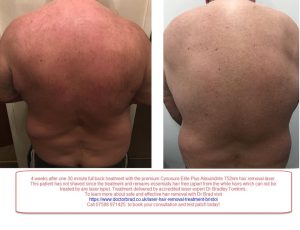
Treatments with the 755nm Alexandrite laser might typically be performed 4-8 times although 3 may be sufficient. Up to 12 treatments on stubborn areas are sometimes required.
Treatments with the 1064nm Nd:Yag laser might typically be performed 6-10 times but 12 may sometimes be required depending on what energy levels the patient can safely tolerate.
Note: Asian Skin with Fine, Dark Facial Hair.
If you have a dark Asian skin and want to remove fine facial hair, Dr Brad can help. This is known as one of the most challenging scenarios in laser hair removal due to the need to balance safety with efficacy of treatment. As a doctor with a variety of lasers to choose from, Dr Brad can transition you to more intense Elite Plus Nd:YAG settings and then to the q-switched Nd:YAG laser if required.
The Procedure.
On the day of the procedure it is best not to have applied any make up or creams to the treatment area and you should have shaved the hairs from the treatment area the evening before. After signing a consent form and confirming that you are well, you’ll be asked to sit comfortably and photographs of the treatment area will be taken. If you are undergoing treatment to an intimate area, Dr Brad insists on providing a clinical chaperone. You’ll put on protective eye-wear and adopt a comfortable position to present the area for treatment. A cleansing wipe might be used over the treatment area. A clear gel may be applied to some treatment areas for safety and comfort. The skin will be divided into different areas with a white make-up pencil to guide treatment. A small test patch will again be performed and after a short wait, if all seems well, treatment will commence.
Watch Dr Brad deliver a typical genuine laser hair removal treatment to the underams.
You’ll hear the noise of the cold air blower and you’ll feel the cold air on your skin. The laser may feel like an elastic band snapping on your skin. You’ll be able to ask for a pause in treatment at any time if required and if energy levels are too high to be tolerable they can be reduced at your request.
There may be a slight smell of burning from laser plume as the laser hits the skin but our treatment rooms are equipped with integrated ventilation systems for your comfort and safety. You can reduce the amount of laser plume generated during your treatment by preparing well in advance i.e. ensuring your legs are clean, free of moisturisers/creams and that hairs have been closely shaved down to the skin.
You can not have hair removal treatment over any skin lesions or tattoos.
Typical timings for a treatment session might be under 30 mins for the lower legs, forearms, back or chest whilst both entire legs can be completed in well under one hour.
At the end of the session a patch test at the next highest treatment level might be performed to assess the response before the next treatment. Higher treatment levels make for better results and fewer treatments. It’s all about finding that “sweet spot” for your skin in achieving the balance between effectiveness and skin safety.
Aftercare.
A cleaning wipe may again be used on the skin to remove makeup pencil and any frazzled hair debris then some Aloe Vera gel will be applied for soothing. A sun cream may be applied to sun exposed areas. Photographs will be taken to demonstrate the condition of the skin after treatment. The next appointment will be booked.
You might expect to see some temporary pink or red colour (called “erythema”) in the treated skin and there may be some little “goosebumps” visible which represent very localised swelling of the hair follicles. Doctors call this “peri-follicular oedema” and it is one sign of an effective treatment.
Prices.
Consultation and patch test: £60 (counts towards your treatment when started within 30 days).
| Alexandrite Laser Hair Removal. | ||
| Single | Package of 6. (Save 10%) | |
| Head and Neck. | ||
| Glabella | 66 | 360 |
| Ears (lobes or tragus) | 66 | 360 |
| Nose | 66 | 360 |
| Upper lip | 83 | 450 |
| Navel line | 83 | 450 |
| Nipples | 88 | 480 |
| Ears: lobes + tragus | 88 | 480 |
| Cheekbones/upper beard shaping | 83 | 450 |
| Chin | 83 | 450 |
| Sideburns | 83 | 450 |
| Upper Lip + chin | 99 | 540 |
| Chin + Jawline | 105 | 570 |
| Chin and “neck under the chin” | 110 | 600 |
| Full neck (front) | 121 | 660 |
| Beard shaping: upper and lower border inc neck | 127 | 690 |
| Sideburns + cheeks + jawline + chin +upper lip. | 138 | 750 |
| Full Beard (face and neck components) | 165 | 900 |
| Upper Body. | ||
| Hands +/- fingers | 83 | 450 |
| Underarms | 105 | 570 |
| Lower arms | 149 | 810 |
| Shoulders | 132 | 720 |
| Full (AKA 3/4) arms | 220 | 1200 |
| Arms, hands and shoulders | 275 | 1440 |
| Chest | 165 | 900 |
| Abdo | 165 | 900 |
| Chest and abdo | 264 | 1440 |
| Chest, abdomen and shoulders | 319 | 1740 |
| Upper back | 187 | 1020 |
| Lower back | 154 | 840 |
| Whole Back | 264 | 1440 |
| Whole back and shoulders | 319 | 1740 |
| Lower Body. | ||
| Feet +/- toes | 105 | 570 |
| Bikini line | 127 | 690 |
| Buttocks | 176 | 960 |
| Buttock crease | 154 | 840 |
| Buttock and buttock crease | 275 | 1500 |
| Lower legs | 154 | 840 |
| Lower legs and knees | 176 | 960 |
| Thighs | 176 | 960 |
| Full legs | 330 | 1800 |
| Full legs and feet | 374 | 2040 |
| YAG Laser Hair Removal. | ||
| Single |
Package of 6. (Save 10%) |
|
| Head and Neck. | ||
| Glabella | 69 | 378 |
| Ears (lobes or tragus) | 69 | 378 |
| Nose | 69 | 378 |
| Upper lip | 87 | 473 |
| Navel line | 87 | 473 |
| Nipples | 92 | 504 |
| Ears: lobes + tragus | 92 | 504 |
| Cheekbones/upper beard shaping | 87 | 473 |
| Chin | 87 | 473 |
| Sideburns | 87 | 473 |
| Upper Lip + chin | 104 | 567 |
| Chin + Jawline | 110 | 599 |
| Chin and “neck under the chin” | 116 | 630 |
| Full neck (front) | 127 | 693 |
| Beard shaping: upper and lower border inc neck | 133 | 725 |
| Sideburns + cheeks + jawline + chin +upper lip. | 145 | 788 |
| Full Beard (face and neck components) | 173 | 945 |
| Upper Body. | ||
| Hands +/- fingers | 87 | 473 |
| Underarms | 110 | 599 |
| Lower arms | 156 | 851 |
| Shoulders | 139 | 756 |
| Full (AKA 3/4) arms | 231 | 1260 |
| Arms, hands and shoulders | 289 | 1512 |
| Chest | 173 | 945 |
| Abdo | 173 | 945 |
| Chest and abdo | 277 | 1512 |
| Chest, abdomen and shoulders | 335 | 1827 |
| Upper back | 196 | 1071 |
| Lower back | 162 | 882 |
| Whole Back | 277 | 1512 |
| Whole back and shoulders | 335 | 1827 |
| Lower Body. | ||
| Feet +/- toes | 110 | 599 |
| Bikini line | 133 | 725 |
| Buttocks | 185 | 1008 |
| Buttock crease | 162 | 882 |
| Buttock and buttock crease | 289 | 1575 |
| Lower legs | 162 | 882 |
| Lower legs and knees | 185 | 1008 |
| Thighs | 185 | 1008 |
| Full legs | 347 | 1890 |
| Full legs and feet | 393 | 2142 |
